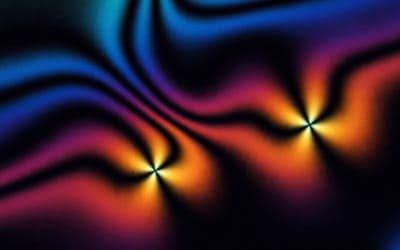
Colour displays and e-readers may become slicker and sharper thanks to a new way of shifting around “digital ink” on a screen. Researchers in the US have presented a more versatile form of electrophoresis, a technique that uses electric fields to control particles suspended in liquid. They say the breakthrough could also be developed for a number of applications such as recreating conditions within the human body.
Conventional electrophoresis works by applying a uniform electric field, generated by a direct current, to a liquid containing charged particles that are then set in motion. The technique has found a range of uses including electrophoretic displays and genetic analysis, where it is used to sort strands of DNA according to size.
Oleg Lavrentovich and his colleagues at Kent State University, Ohio, have now developed a variant of the technique that no longer requires the mobile particles to be charged. The key to the breakthrough is to replace the liquid with a hybrid form of matter known as a liquid crystal, which displays the properties of a liquid and those of a solid crystal.
Distorted crystals
By injecting gold- and silica-based spheres, with diameters of just a few microns, Lavrentovich’s team create distortions within a common liquid crystal known as E7. These deformations, however, are asymmetric on either side of the particles and so the presence of an electric field causes free ions and their containing liquid to flow along a path connecting the two deformations. This flow can be used to shunt particles around within the liquid crystal. “These tiny distortions depend on the orientation of molecules within the liquid crystal,” explains Lavrentovich.
Another flexible feature of this transport mechanism is that it can work with an alternating as well as a direct current electric fields. According to the researchers, an AC field is more desirable within an electrophoretic system because it overcomes the problems caused by electrolysis and the absence of steady flows. They say that being able to vary the electric fields and having a wider choice of particles, could lead to electrophoretic systems with more control.
“The proposed work is very interesting because it describes how to control motion of various particles in three dimensions,” says Young Hee Lee, a nanotechnology researcher at Sungkyunkwan University, South Korea.
Lavrentovich says his team is open to offers from investors who want to develop the various applications that could stem from this research. In terms of developing the underlying physics, the researchers will try to recreate their new electrophoretic technique in water-based liquid crystals, which have structures comparable with certain conditions within the human body. Recreating these environments could, in theory, help to gain a better understanding of biological processes as well as to help with the development of drug delivery and medical tracking systems.
The research is described in a paper published in this week’s Nature.






